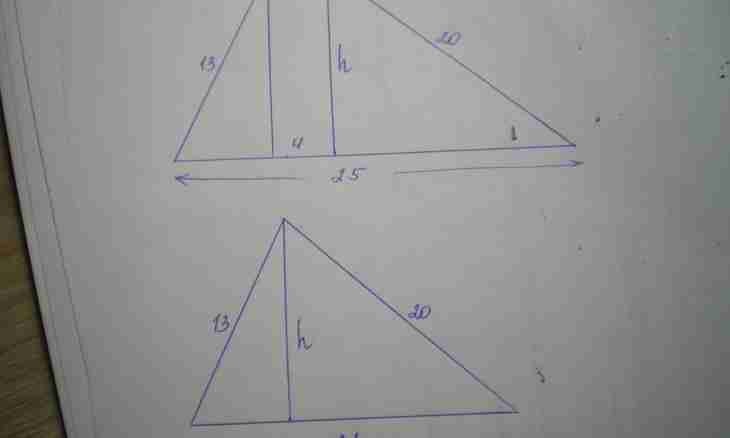The quadrangle at which couple of opposite parties are parallel is called a trapeze. In a trapeze define the bases, the parties, diagonals, height, the average line. Knowing various elements of a trapeze, it is possible to find its area.
Instruction
1. Find the area of a trapeze on a formula S=0.5×(a+b) ×h if an and b — lengths of the bases of a trapeze, that is the parallel parties of a quadrangle, and h — trapeze height are known (the smallest distance between the bases). For example, let the trapeze with the bases of a=3 of cm, b=4 of cm and height of h=7 is given see. Then its area will be equal to S=0.5×(3+4) ×7=24.5 to cm².
2. Use the following formula for calculation of the area of a trapeze: S=0.5×AC×BD×sin(β) where AC and BD are trapeze diagonals, and β — a corner between these diagonals. For example, the trapeze with the diagonals of AC=4 cm and BD=6 cm and a corner β=52 °, then sin (52 °) ≈0.79 is set. Substitute values in cm² formula S=0,5×4×6×0,79≈9,5.
3. Count the area of a trapeze when its m — average line (the piece connecting the middle of the parties of a trapeze) and h — height are known. In this case the area will be equal to S=m×h. For example, let at a trapeze average m=10 line of cm, and h=4 height see. In this case it turns out that the area of the set trapeze is equal to cm² S=10×4=40.
4. Calculate the area of a trapeze, in a case when lengths of its sides and the bases on a formula are given: S=0.5×(a+b) × √ (with²− (((b−a)²+c²−d²) ÷ (2×(b−a)))²), where an and b — the bases of a trapeze, and c and d — its sides. For example, let the trapeze with the bases of 40 cm and 14 cm and sides of 17 cm and 25 cm is given. On the above-stated formula S=0.5×(40+14) × √ (17²− (((14−40)²+17²−25²) ÷(2×(14−40)))²) ≈ 423.7 cm².
5. Calculate the area of an isosceles (ravnoboky) trapeze, that is trapezes at which sides are equal if the circle on a formula is entered in it: S= (4×r²) ÷sin(α) where r is the radius of an inscribed circle, α — a corner at the trapeze basis. Corners at the basis are equal in an isosceles trapeze. For example, let the circle by cm r=3 radius, and a corner is entered in a trapeze at the basis α=30 °, then sin (30 °) =0.5. Substitute values in a formula: S=(4×3²) ÷0.5=72 cm².

